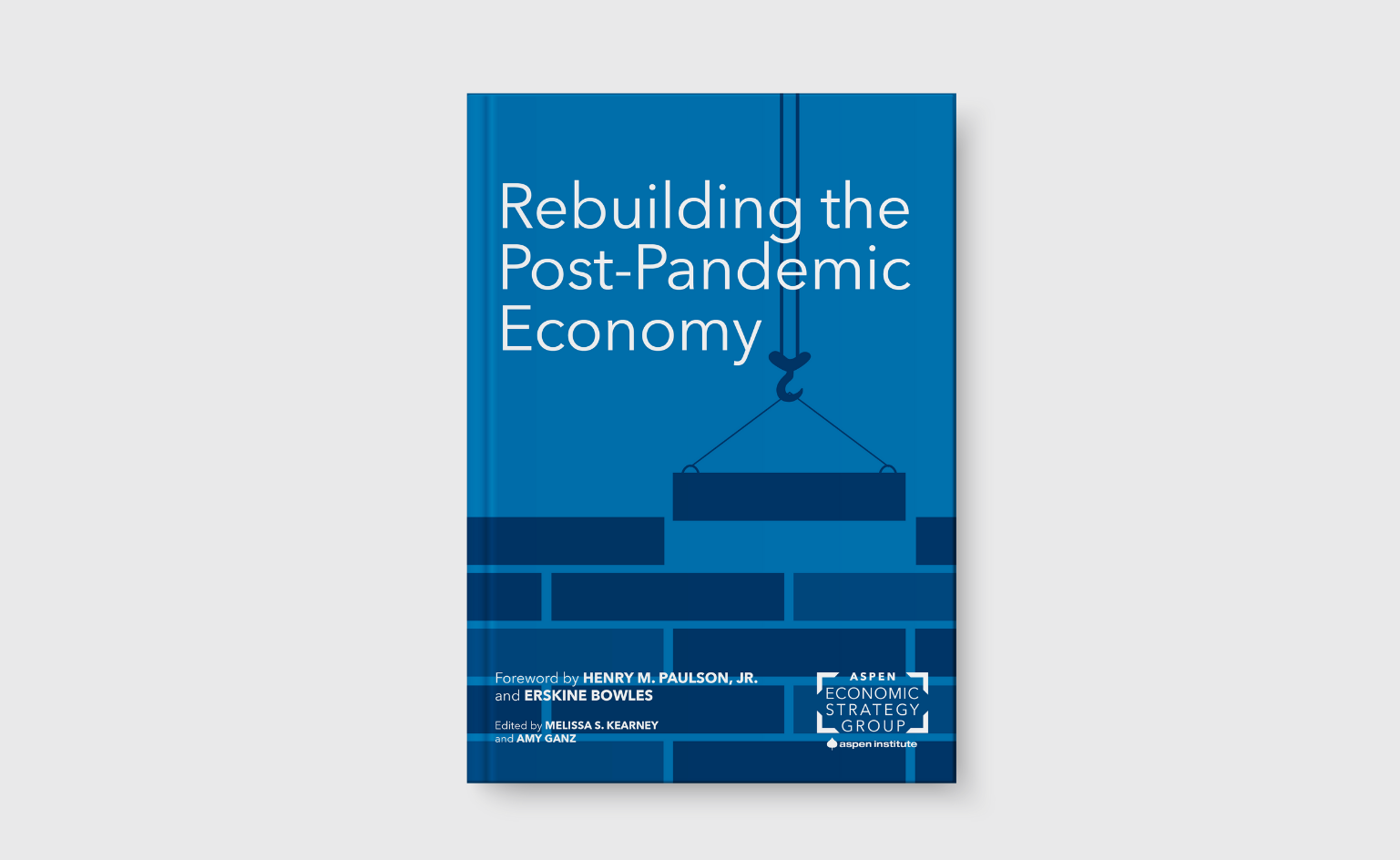Despite decades of federal and state policy reforms and major philanthropic investments, there are still glaring deficiencies and inequities across the US K-12 education system. In “Addressing Inequities in the US K-12 Education System,” economists Nora Gordon of Georgetown University and Sarah Reber of University of California, Los Angeles argue that reducing inequities in American education will require improving the education system in ways that benefit all students and schools. Progress will require a renewed focus on the “fundamentals” of the K-12 system, including an emphasis on how staff are trained, recruited, retained, and supported in their work; the effective design of curriculum; and the maintenance of safe and healthy school buildings. Progress will also require shifting attention away from the false promise of “silver bullet” interventions that have failed to produce results.
Gordon and Reber acknowledge the complicated nature of school governance in the US K12 educational system. They note that state governments make most of the important educational policies about elementary and secondary education in this country, while local districts are responsible for the implementation decisions associated with operating schools. While the federal government can play a key R&D function and provide much needed financial assistance, attaching strings to federal aid is a powerful, but limited, tool. The authors also acknowledge the role of non-school factors in determining educational outcomes in this country, including the pernicious influences of structural inequality and racism across American society and the deleterious consequences of childhood poverty. The U.S. should work to address these challenges while also improving school systems.
Gordon and Reber highlight three key principles to guide future efforts in improving K-12 schools in the U.S.:
- Focus on key elements of education delivery: School leaders and administrators should focus efforts on the key elements of how to effectively deliver educational content to all students. There is no substitute for effective teachers, supported by good principals and staff, working with a reasonable number of students, using a strong core curriculum, working in a well-maintained building with access to necessary technologies and supplies—including sufficient planning time.
- Increase emphasis on vulnerable students: Available data suggest that students with disabilities, English learners, and American Indian students are often not being served well by our schools. A new focus on these groups—including collecting better data, conducting more research, and better training teachers—is warranted.
- Adopt proven policies and practices, mind the details: School leaders should encourage the thoughtful adoption of strategies that have been shown to work or might be expected to work based on what we know about learning. Such efforts will require greater attention to engaging with educators and communities to ensure the strategies can be implemented well and make sense in the local context.
STALLED PROGRESS AND PERSISTENT GAPS
Gordon and Reber provide a comprehensive overview of the challenge of stalled progress and persistent racial and ethnic gaps in U.S. K-12 educational outcomes. Data on standardized test scores reveal that overall progress in math and reading has stalled for a decade or more. Math scores improved substantially between 1990 and 2005 or so, especially for 4th graders. But progress has since stalled. In terms of reading, 4th graders’ reading skills improved in the 2000s but have since plateaued, and 8th graders’ reading skills have barely improved since the mid-1990s.
There are also persistent racial and ethnic gaps in scores. Test scores for all racial and ethnic groups improved between the 1990s and early 2010s, and gaps narrowed. However, there has been little improvement since. Black and Hispanic students continue to score lower than their White and Asian peers, on average. Similar gaps are observed in educational attainment and completion measures. Years of completed education are lowest, on average, for American Indian and Alaska Native students. These gaps reflect a troubling lack of equal opportunities, in school and beyond, for all American children.
THE COMPLICATED LANDSCAPE OF K-12 EDUCATION IN THE UNITED STATES
Reforming education in the U.S. is made difficult by the complicated and varied landscape of the US K-12 school system. Gordon and Reber provide an overview of the system that makes it clear that progress will require effective coordination and leadership at multiple levels of administration, oversight, and funding.
- The vast majority of children aged 5- to 17-year-old attend traditional public schools based on their home address and district boundaries. Nationally, 6.5% of public school students are enrolled in charter schools. About 10% of K-12 students attend independent private schools and about 3% of students are homeschooled.
- Traditional public schools are run by more than 13,000 school districts nationwide. The size and structure of local school districts, as well as the powers they have and how they operate, vary widely across states.
- The U.S. Constitution grants state governments authority over education, and states in turn delegate authority to finance and run schools to local districts. States play a major role in determining school finances, teacher certification, requirements for high school graduation, age of compulsory schooling, the regulation of charter schools, home-schooling requirements, curricular standards, and systems for school accountability (subject to federal law), all of which vary considerably across states.
- The federal government influences elementary and secondary education by providing funding. The largest formula-aid federal programs are Title I of the Elementary and Secondary Education Act (ESEA), which provides districts funds to support educational opportunity, and the Individuals with Disabilities Education Act (IDEA), for special education. Federal legislation specifies how federal funds can be spent and requires states and districts to adopt policies as a condition of Title I receipt, including desegregation and test-based accountability standards.
- Non-government actors include teachers’ unions, schools of education, philanthropy, and advocacy organizations. Gordon and Reber highlight that many teacher training programs do a poor job of incorporating research-based best practices and emphasize that schools of education—although often overlooked in policy discussions—are central to any effort to change how teachers are trained. Private philanthropy, in addition to funding individual schools, is increasingly influential in state and local policymaking, often through advocacy groups.
- School districts are responsible for how school funding is spent. Inflation-adjusted, per-pupil revenue to school districts has increased steadily over time and averaged about $15,500 in the most recent year recorded (2019). Per-pupil funding varies considerably by state, ranging from just over $9,000 per pupil in Idaho to over $29,000 per pupil in New York. On average, school districts generate 46% of their revenue locally (80% of which is from property taxes), about 47% from state governments and about 8% from the federal government.
- Typically, districts serving more students in poverty receive more state and federal funding, offsetting differences in funding from local sources. Districts are responsible for allocating most funds across their schools, and funding can be unequal across schools within districts. Schools that enroll more economically disadvantaged students, or more students of color, on average experience higher teacher turnover, leaving them with less-experienced, lower-paid teachers.
POLICY LEVERS FOR IMPROVING SCHOOLS
Gordon and Reber emphasis the critical role of school inputs, budget, and governance and incentives in improving the US K-12 education system.
School inputs
Gordon and Reber summarize a vast amount of research, concluding that there are four main school factors that determine student outcomes: staff, peers, curriculum and materials, and school infrastructure.
First, teacher quality is a critical input. Higher teacher quality has been shown to cause persistent improvements in student outcomes. One way to improve the average quality of teachers is by changing who is hired and retained as teachers. Changing the structure of teacher pay to reward those in hard-to-fill positions, whether based on subject expertise or geography (rather than those with degrees or certificates unrelated to teacher effectiveness) and creating new career pathways for effective teachers can advance this goal. Teacher quality can also be improved through efforts to train existing teachers. For example, pairing student teachers with more instructionally effective cooperating teachers improves their subsequent performance as new teachers. Reber and Gordon note that principals and school counselors can also influence student outcomes.
Second, research clearly demonstrates that peer influences matter. Students learn from each other, affect what type of curriculum is offered, influence the culture of the school, and use more or less of the teacher’s time. A disruptive student, for example, can reduce the time students are actively learning, and the authors point out that it’s important to address the underlying problems of such a student.
Third, curriculum is central to the work of schools and includes both the instructional materials used and the sequence and fashion in which they are taught. However, implementing improvements to curriculum is not always straightforward, as educators must both choose the right curriculum for their contexts and ensure it is implemented well.
Fourth, the authors cite research that shows spending on capital improvements or building new schools improves test scores and other outcomes. Many schools are desperately in need of upgrades to remove lead, update HVAC systems, and install air conditioning. Schools serving low-income students and students of color are more likely to need such improvements.
Gordon and Reber note that the effectiveness of the four inputs described above depends on how they are organized and used in schools. These organizational choices include determining school and class size, how students and teachers are assigned to each room, how students are grouped inside classes or “pulled out” to work with a paraprofessional or specialist, and how to handle student behavioral problems. The processes identifying students eligible for a range of specialized services are often not equitable. For instance, studies have found instances in which Black students are half as likely to be referred for gifted programs compared with White peers, even after controlling for test scores. Exclusionary disciplinary practices also disproportionately affect students of color. Restorative justice and behavioral interventions and supports are two alternatives to exclusionary discipline that have shown promising results but require staff time and training.
School spending
In general, increases in spending lead to improved educational outcomes for students. However, improving student outcomes is not as simple as simply giving school districts more money. When the federal or state government gives more money to local governments or school districts, those actors can respond by reducing their own spending on schools. Consequently, increasing budgets at the school district level is not always effective. Resource differences across schools within districts are also important to consider.
Spending formulas also need to be considered carefully, as they can have unintended negative consequences. For instance, moving from a funding mechanism where districts fund the salaries of the staff employed in a school to one where schools receive a pot of funds that depend on student characteristics would leave schools with more experienced (and hence expensive) teachers unable to maintain their current workforce.
School governance and incentives
Gordon and Reber discuss various approaches that attempt to improve schools by changing systems at a high level.
First, the authors consider the effects of desegregation. Research shows that desegregation efforts of the 1960s and 1980s generally led to improved student outcomes for Black students. However, school desegregation significantly reduced the number of Black teachers, which likely reduced the benefit to Black students overall. The authors note that today, residential segregation by race leads to de facto school segregation in many places. Thus, addressing residential segregation is crucial for further progress to be made desegregating schools.
Second, the authors consider alternative systems to the assignment of students to residential neighborhood district schools. The authors summarize the results of hundreds of studies on this topic as follows. On balance, charter schools lead to moderate improvements in nearby schools due to charter competition, though charter school quality is highly variable. Voucher programs have also been shown to have small to substantial benefits. Choice programs appear to benefit participating students, though the magnitude of these effects varies considerably and is often small and sometimes negative.
Third, the authors discuss school accountability efforts, which are aimed at holding districts accountable for meeting certain metrics. Perhaps the most significant accountability regime in recent years was the No Child Left Behind Act (NCLB, later reauthorized with modified accountability requirements as the Every Student Succeeds Act). NCLB had modest, positive impacts on test scores but also induced perverse responses, such as teaching to the test, focusing instruction on students near the proficiency thresholds, and reduced emphasis on instruction in untested subjects and grades. Studies of school turnaround efforts yield mixed results; those that included extending learning time and replacing a significant share of a school’s teaching staff had stronger impacts.
Finally, Gordon and Reber conclude by discussing the challenges surrounding the use of “evidence-based practices,” noting that the research base for many teaching and learning practices is thin, does not consider cost-effectiveness, and is context-dependent. The authors recognize the central tension between providing more flexibility with the time, training and resource constraints of education leaders, which enhance the appeal of simple lists of approved practices.
Suggested Citation: Gordon, Nora, and Sarah Reber. December 10, 2021. “Addressing Inequities in the US K-12 Education System” In Rebuilding the Post-Pandemic Economy, edited by Melissa S. Kearney and Amy Ganz. Washington, DC: Aspen Institute. https://doi.org/10.5281/zenodo.14057550.
Download (PDF)
Executive Summary








